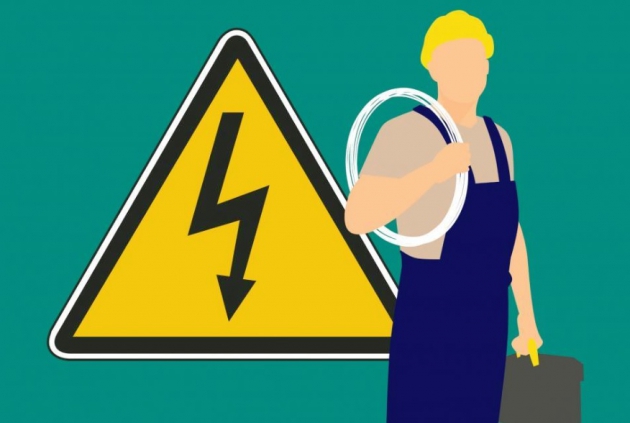If you have a gas furnace in your home, you’re not alone. This is still one of the most popular heating systems across the country. A gas furnace is a cost effective way to heat your home making it an excellent choice for homeowners. A modern furnace is replete with safety measures to make your heating experience as safe as possible. Despite this, whenever you invite natural gas into your home, there is always a potential risk for combustion problems and toxic gas leaks. In order to minimize these risks even further, the priority has to be to take care of your heat exchanger.
What is a Heat Exchanger?
A heat exchanger is a component in your gas furnace that supplies the heat to the air that is then blown into your home with the blower fan. When you look at this component, it’s often shaped like a metal clamshell, and there may be a number of them set into rows throughout the furnace. This area is where the heated combustion gas from the burners is collected, and the heated gas will raise the temperature in the metal walls. This makes the exterior of the heat exchanger hot, the furnace can then apply the heat from the combustion gas to the air, and this can be achieved without releasing that toxic gas into the surrounding atmosphere. For reasons that we will detail below, a cracked heat exchanger is very dangerous, and it should never be ignored.
Why is a Cracked Heat Exchanger Dangerous?
Despite the terminology, a crack in the heat exchanger may be invisible to the naked eye. The crack may be so thin that you could pour water onto it while it’s cool and the water may not even pass through it. But, when that same surface becomes heated the crack will widen up and then the crack will be able to release toxic gas into the air. This will pollute your living space with a gas that should have been safely vented away via the flue.
The released gas is carbon monoxide or CO, and if you’re exposed to it in significant quantities, it can have a dramatic effect on your health. Some of the most common early symptoms include effects, such as dizziness, nausea and a feeling of lightheadedness. Eventually, a person exposed to CO may lose consciousness and suffer from fatal consequences. This is why a cracked heat exchanger can be so dangerous to the occupants in an affected home.
Carbon monoxide cannot be detected easily with our senses, and this can make it particularly dangerous at night when we are asleep. The best way to protect your family from carbon monoxide poisoning is to install a CO detector to detect a build up in your home. Another good way to protect against carbon monoxide is to have regularly scheduled annual maintenance carried out on your gas furnace before the start of the heating season. If carbon monoxide is detected in your home, get everyone outside, open up all the windows for ventilation and contact the emergency services right away.
Furnace Fires and Flame Outs
There are two more dangerous heat exchanger problems that occur less often; they are a furnace fire and flame outs.
A furnace fire is a fairly common event. FEMA estimates that around 1,800 furnace fires occur annually. They are exacerbated by a cracked heat exchanger, and these types of fires can cause a great deal of damage to surrounding structures. It’s estimated that the average loss incurred by a furnace fire is approximately $5,027 per household.
A flame out happens when there is an incorrect mixture of natural gas and air, which is then combusted in the heat exchanger. This will result in a build up of uncombusted gas that will continue until it reaches a level high enough in volume to become explosive. When this point is reached, the gas will suddenly combust and then flames and built up air pressure will be forced out of any available crack or hole in the heat exchanger. The only way to avoid this situation is to maintain the correct air to fuel mixture, and this is a crucial part of any routine annual maintenance checkup.
How Does a Heat Exchanger Crack?
Any gas furnace no matter the manufacturer will eventually develop some kind of crack in the heat exchanger. This is simply a property of these types of furnaces. A heat exchanger is designed to hold in the combustion that occurs from the natural gas in line with the air that is forced into your home. Tremendous forces are at work when the combustion occurs the metal exchanger will expand and then it will contract when it cools down again. This process is repeated over and over and every time stress is placed upon the metal surfaces, and eventually, they will fail. Of course, a heat exchanger is made of metal that is designed to work in this way, and it may take some time for the accumulated stress to form a crack.
What Can You Do About a Crack?
The natural response to learning about the dangers of a cracked heat exchanger is to get your unit checked for any cracks. A local HVAC specialist will be able to inspect your equipment as part of a routine maintenance checkup. Always choose a reputable company, like any industry there are untrustworthy companies that may try to scare you into purchasing a new heat exchanger. Don’t be afraid to ask questions, ask to see the crack or cracks in your heat exchanger. If they have nothing to hide they should be able to provide credible evidence that your heat exchanger needs to be replaced. A heat exchanger cannot be repaired, and a replacement will be required. Once the heat exchanger is replaced, you will have peace of mind, but it’s still important to have regular annual maintenance carried out by a certified engineer.

